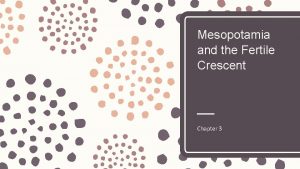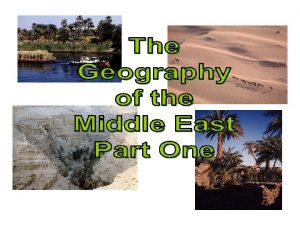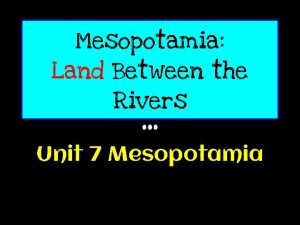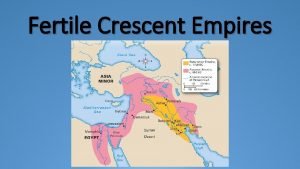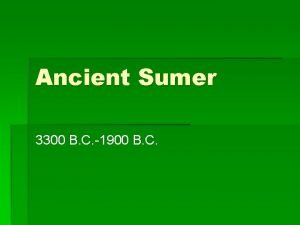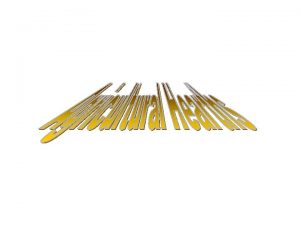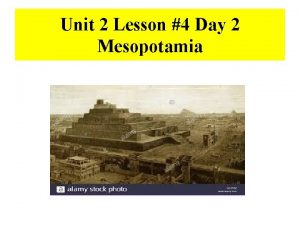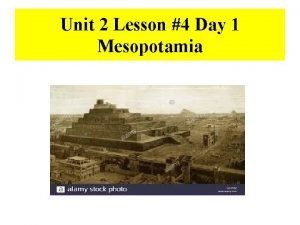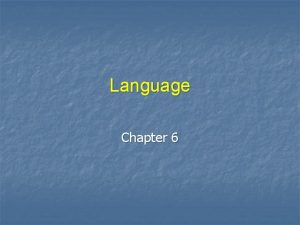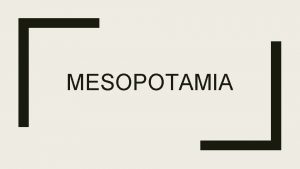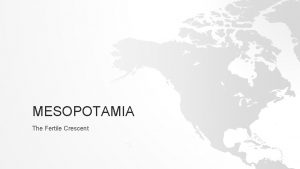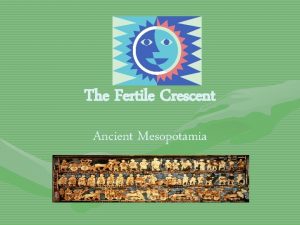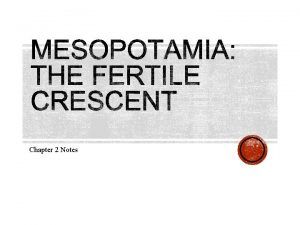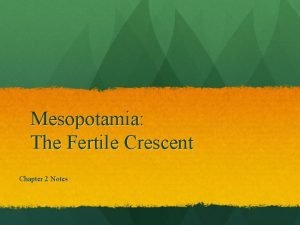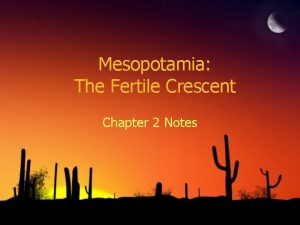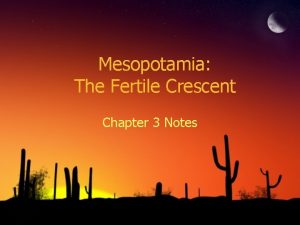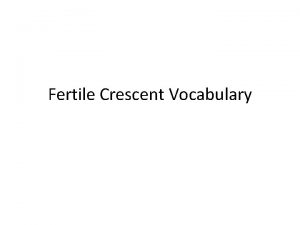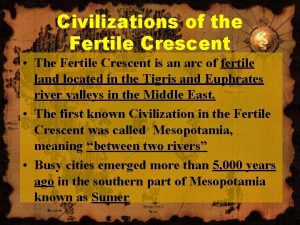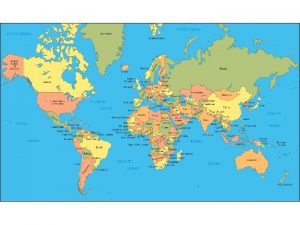Mesopotamia The Fertile Crescent Chapter 3 Notes Fertile












- Slides: 12

Mesopotamia: The Fertile Crescent Chapter 3 Notes

Fertile Crescent ◊ Fertile Crescent = moon-shaped strip of land from the Mediterranean Sea to the Persian Gulf that is excellent farm land • Located in modern-day Middle East

Mesopotamia ◊ Mesopotamia = located within the Fertile Crescent, between the Tigris & Euphrates Rivers • Rivers were NOT a reliable source of water (unlike the Nile) • Ran dry in summer; flooded in spring • Villages joined together to build dams, canals, and ditches

The Sumerian Civilization ◊ People from Asia arrived in Mesopotamia ◊ Formed 12 city-states = the city and the land surrounding it • Considered the world’s 1 st cities ◊ Created ziggurats = stepped pyramids with a temple at the top

The Sumerian Civilization ◊ Sumerians shared common culture, language, and religion ◊ City-states governed themselves ◊ Were theocracies = kings served as both government leaders AND high priests ◊ Laws regulated the roles of women & men had far more rights

The Sumerian Civilization ◊ Cuneiform = Sumerian system of writing • The symbols represented complex ideas

The Sumerian Civilization ◊ Scribes were trained to read & write documents and stories • Epic of Gilgamesh = oldest story in the world

The Sumerian Civilization ◊ Practiced polytheism = belief in more than one god • Each city-state had its own god • Negative outlook on life and the afterlife • Believed gods were selfish and had no regard for humans

Sumerian Inventions 1. 2. 3. 4. 5. Wagon Wheel Arch Potter’s Wheel Sundial 12 -month Calendar 6. Metal Plow

First Mesopotamian Empires The Akkadians ◊ Empire under Sargon I ◊ Kingdom was called Akkad ◊ Conquered & united all of the Sumerian citystates ◊ Empire fell apart after his & his grandson’s death

First Mesopotamian Empires Babylon ◊ Ruled by Hammurabi ◊ Strict Code of Laws = Hammurabi’s greatest achievement • Rules and consequences that addressed daily life • Law code covered entire region of Mesopotamia • “Eye for an eye, tooth for a tooth” type of laws • Government assumed the responsibility of protecting its citizens • People now had laws to protect their rights & didn’t need to resort to violence

First Mesopotamian Empires Babylon ◊ Social classes were similar to the Egyptians, but they had far more slaves ◊ Hammurabi’s empire fell apart after his death
 Geography of the fertile crescent
Geography of the fertile crescent Geography of the fertile crescent
Geography of the fertile crescent Fertile crescent
Fertile crescent Fertile crescent ap human geography definition
Fertile crescent ap human geography definition Fertile crescent environmental challenges
Fertile crescent environmental challenges Esopotamia
Esopotamia Fertile crescent
Fertile crescent Fertile crescent on world map
Fertile crescent on world map Fertile crescent hearth
Fertile crescent hearth Unit 2 lesson 4 fertile crescent
Unit 2 lesson 4 fertile crescent Unit 2 lesson 4 fertile crescent
Unit 2 lesson 4 fertile crescent The fertile crescent is the arc of land that
The fertile crescent is the arc of land that Multilingual state
Multilingual state
